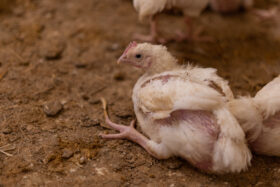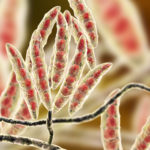Conference Report
The price of corn and soybeans dictates the price of all other ingredients, including to some extent amino acids, stated Dr Steve Leeson Professor Emeritus, University of Guelph, Canada at the recent EW Nutrition Poultry Academy in Jakarta, Indonesia.
The big question is, when times get tough, can we reduce safety margins and still get good performance?, asked Dr Leeson. “When we formulate diets, we build in some insurance. But so do the breeding companies in their recommendations. For sure, reducing safety margins takes us out of our comfort zones, but we need to be nutritionists, not mathematicians,” he stressed.
Protein and energy are now expensive. As a result of this economic pressure, there is a focus on strategies to reduce feed costs and improving the production efficiency and profitability of poultry enterprises. Feed cost/kg body weight gain is not always at the lowest feed:gain.
To help achieve these targets, Dr Leeson discussed feeding and management strategies that take into account the cost mitigation requirement.
Optimize current digestibility/efficiency
With high feed prices, it is especially important to review the use of feed additives that optimize nutrient release and improve ‘digestibility’. The most obvious class of such additives are the various exogenous enzymes that improve the availability of phosphorus, energy, and amino acids. In most instances, these different classes of enzymes are additive in terms of nutrient release, since they have different target substrates or modes of action. All too often, the position is taken that “I take energy uplift from my amylase, so I can’t expect energy release from phytase or protease”.
The energy release from phytase is invariably net energy related to removal of the phytate molecule, which in effect is an ‘antigen’ and takes energy to counter its negative effects. The energy release from an amylase, however, is obviously related simply to the improved digestibility of carbohydrate complexes. Similarly, a protease enzyme will always provide energy, since all protein/amino acids are eventually used for energy during protein turnover, hence our use of the often forgotten ‘n’ in AMEn. We also have the choice of enzyme concentration, especially for phytase, which in the current economic solution is likely to be close to 2 – 2.5 doses, assuming a single dose is around 500-600 FTUs. The economics of super-dosing or mega-dosing is greatly impacted by the cost of the enzyme.
The response of phytase varies with individual amino acids, and with ingredients, with greater responses with ingredients of lower inherent digestibility. Generally, Dr Leeson suggests that a protease will capture 20% of indigestible amino acids. For example:
- 70% digestibility = +6% uplift
- 90% digestibility = +2% uplift
Relax ingredient constraint maximums
Probably the greatest current cost savings can be made from relaxing the maximum levels on ingredients. While corn and soybean meal levels are usually without restriction, we often impose limits on the upper levels of ‘alternative’ ingredients such as distillers grains, rice by-products and rapeseed/canola meals, etc. When the upper levels are reached in the formula, this suggests cost savings from using higher levels. Current restraints are based on past knowledge of perhaps variable nutrient composition and so the decision to use more of any ingredient must be based on past knowledge of on-going quality control assays. Although we can achieve considerable detail today in such QC assays, monitoring for (consistency of) crude fiber, crude protein, fat, and moisture alone, provide a sound basis for decisions on whether to use more of an individual ingredient.
Source alternate ingredients
Another option is to consider ‘new’ alternative ingredients. In reality, however, there are no new ingredients as such, since all monogastric nutritionists around the world have only around 19 ingredients available in sufficient quantities to sustain large-scale modern feed mills. There are certainly smaller quantities of specialised local by-products that can be used to advantage, yet these are becoming scarce. Therefore, an ingredient is only novel to you, since inevitably the same ingredient has been used for many years in other regions. As such, there is a wealth of information available on the nutritive value of these ‘new’ ingredients that can be simply transposed to our formulation matrices.
The bird is very adaptable to new ingredients, in fact it is more responsive to nutrients. Unless there are toxins, antinutritional factors, or other negative factors, it doesn’t matter to the bird. Knowing the ingredient composition is the critical feature regarding the success or failure with new ingredients.
Reduce nutrient density
Both layers and meat birds still eat quite precisely to their energy requirements. They are amazingly adaptable to a vast range of nutrient densities, assuming that they can eat enough feed as the lower levels of feed energy are approached. Success in using lower levels of nutrient density is invariably negatively impacted by factors such as high stocking density and a high environmental temperature. Conversely, reducing diet energy usually has the hidden advantage of improved pellet quality.
The key to successful use of lower energy diets lies in prediction of change in feed intake and corresponding adjustment to all other nutrients in the diet.
Flexible cost of Dietary electrolyte balance (DEB)
When first introduced in the 1970s, maintaining DEB around 250MEq was seen to optimize broiler performance, especially leg condition. There is now less emphasis on this, perhaps because of genetic selection for skeletal integrity. DEB, however, may be important during heat stress to stimulate water intake and control manure moisture. Formulating to fixed DEB levels always adds costs. Instead, Dr Leeson suggested to focus on sodium and chloride at a ratio of 1:1.3.
Optimize feed texture (pelleting)
The first consideration is to make a good quality pellet, then worry about pellet size, noted Dr Leeson. He also added he was “a big fan of sunflower meal – it’s great for pellet quality.”
When given a choice in particle sizes, birds invariably show a preference for the largest particles. This situation becomes obvious when ‘fines’ accumulate in the feeder pans over time. As shown below, as pellet size increases, so does the bird’s need to consume fewer pellets. As a result, they need to spend less time at the feeder. Naturally, this idealised pellet size must be balanced against the willingness of mill managers to accommodate the necessary changes in pellet die size. Matching pellet size to bird age becomes critical as stocking density increases.
Impact of pellet size on pellet number consumed by a 30-day-old broiler
| Pellet size (diameter) | 4 mm length | 6 mm length |
| 3 mm | 580 | 390 |
| 4 mm | 330 | 220 |
| 5 mm | 210 | 140 |
In the end, cost mitigation should not require complex mathematics. Nutritionists should be able to play with several types of improvements without affecting health and performance.
***
EW Nutrition’s Poultry Academy took place in Jakarta and Manila in early September 2023. Dr. Steve Leeson, an expert in Poultry Nutrition & Production with nearly 50 years’ experience in the industry, was the distinguished keynote speaker.
Dr. Leeson had his Ph.D. in Poultry Nutrition in 1974 from the University of Nottingham. Over a span of 38 years, he was a Professor in the Department of Animal &Poultry Science at the University of Guelph, Canada. Since 2014, he has been Professor Emeritus at the same University. As an eminent author, he has more than 400 papers in refereed journals and 6 books on various aspects of Poultry Nutrition & Management. He also won the American Feed Manufacturer’s Association Nutrition Research Award (1981), the Canadian Society of Animal Science Fellowship Award (2001), and Novus Lifetime Achievement Award in Poultry Nutrition (2011).















